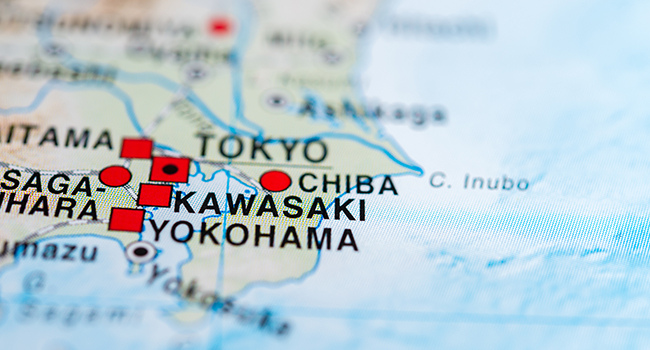
Two Killed, 17 Injured in Knife Attack in Japan
Two people were killed and 17 people, mostly schoolchildren, were injured in a deadly knife attack near Tokyo on Tuesday.
- By Jessica Davis
- May 30, 2019
Two people were killed and 17 people—mostly schoolchildren—were injured in a deadly knife attack near Tokyo on Tuesday. Japan, generally considered to be one of the safest countries in the world, is adjusting security measures in response.
According to authorities, a man brandishing a knife attacked schoolgirls and their parents as they walked to or waited at a bus stop in Kawasaki on Tuesday. An 11-year-old girl and a 39-year-old man were killed and at least 17 people, mostly children from Caritas Elementary School, were injured before the attacker died by suicide.
A father of a student at Caritas Elementary School said Wednesday he had believed children were safe when traveling to school thanks to a system that has teachers escort children from a nearby train station to a bus stop for a privately run bus to school. Now, he said, he is unsure how the children’s safety can be guaranteed.
"The school was taking good care of our children for their safety, including the bus driver," the man, who did not want to be identified, told reporters. "How on earth can adults protect our children?"
According to experts, Japan’s current safety measures, which mostly rely on older people and community volunteers as opposed to security experts, are not enough to prevent a crime like the incident Tuesday, which they described as a suicide attack.
Mieko Miyata, head of a nonprofit research institute that specializes in children’s safety, told ABC News that children going to school in the morning are particularly vulnerable to attacks because they can be easily located. Children at a fixed location like a school bus stop, especially if they’re wearing uniforms, could be targeted, she said.
"In addition to neighborhood monitoring, there should concrete anti-crime measures, such as the presence of professional security guards in uniforms," she said.
Japanese Prime Minister Shinzo Abe told police and education officials Wednesday to reinforce safety measures and patrols to protect the country’s children. Abe called for more neighborhood watch groups formed by community volunteers and urged schools and law enforcement to share information about suspicious people.
"We must do whatever it takes to protect children's safety," Abe said. "I feel extreme regret about the extremely harrowing attack that affected many young children."
The Japanese government has previously created crime prevention manuals for schoolchildren who commute. Chief Cabinet Secretary Yoshihide Suga said officials are considering designating safe locations for children to gather before traveling to school in groups, either on foot or by bus.
Shooting deaths are rare in Japan due to strict gun laws, but the country has experienced killings involving stabbing with knives in recent years. In 2016, a former employee at a care facility for disabled people allegedly killed 19 people and injured more than 20. In 2001, a man attacked an Osaka elementary school, stabbing eight children to death and injuring 15 other people.
About the Author
Jessica Davis is the Associate Content Editor for 1105 Media.